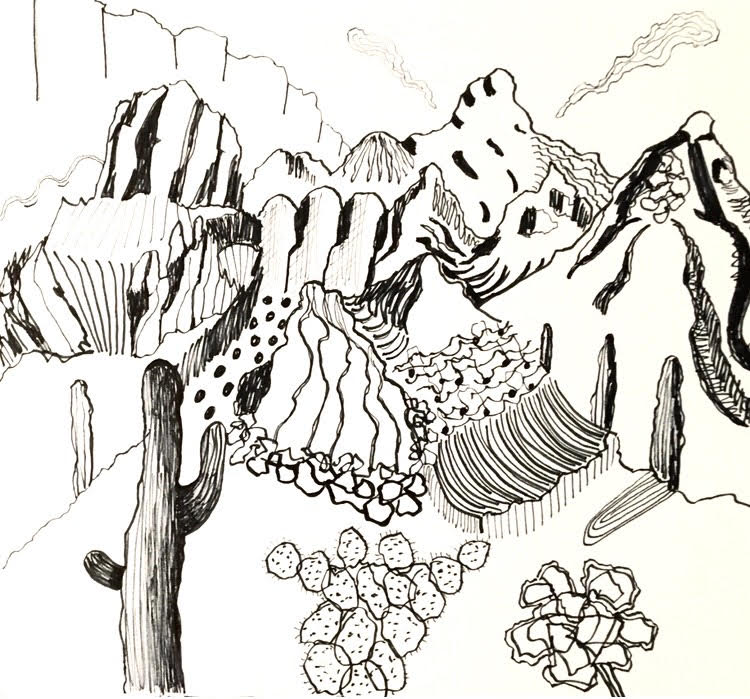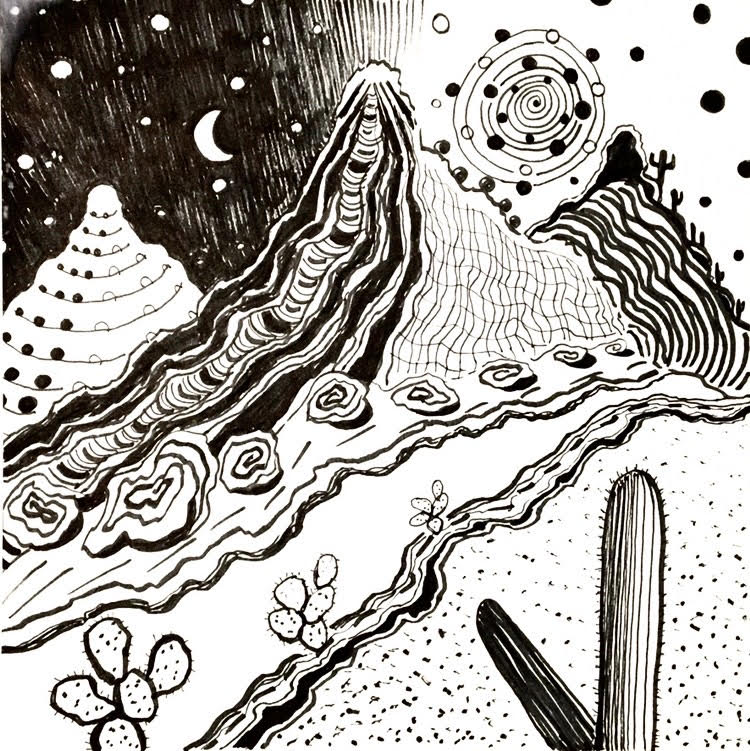For those of us who hail from the East Coast, this drive to Tucson, Arizona—commencing in Colorado, proceeding via New Mexico and Arizona—is full of the unfamiliar. The flora and fauna, the landscape, the layout of the roads, are all very different. The speed limits are notably higher here. Many brand names are specific to the region, unavailable elsewhere. The place-names here can be unlike those of the more staid mid-Atlantic. Native American imagery is significantly more prevalent here. It is true terra incognita.
Calvin Coolidge did not exactly employ the phraseology that the business of America is business, but this should not diminish his prescience. Coolidge, in this case, was spot-on. A road trip highlights this in many different ways. The country chugs along on fees, hidden fees, added fees, extra fees, service charges. Money is extracted at almost every conceivable possibility.
The incessant fee extraction is part of a broader picture: the United States is a visibly poor country to a shocking degree. Grabbing money from a financially strapped populace seems counterintuitive, but seems to follow a certain thematic logic. Accordingly, the journey to Tucson yields casinos, pawn shops, hardscrabble housing. It is not only here, of course. Not by any stretch.
There are three youngish men at a table at a utilitarian New Mexico lunch spot. Their conversation—full of recollections, news of mutual acquaintances, laughter—can be easily overheard. One of the three matter-of-factly mentions that meat is beyond the budget for his family. The area has feral cows. And this is true—there are periodic, very noticeable road signs bearing the image of a bovine. Perhaps, this man muses, it would be possible to trap one. He goes on, sketching out a potential plan.
Restaurant and hotel staff—not just in the southwest, of course—are heavily Latino, as are lawn-care and landscaping workers. Where is all the bounty that these immigrants are supposedly receiving, that unending government largesse? It would be logical to assume, if one travels to different parts of the country, somethingin the way of this fabulous wealth should be visible. In New York City and in so many other places, wealth can be easily ascertained; it doesn’t require much detective work. But there are no fancy cars to be observed in employee parking sections, no sartorial splendor, nothing in the way of opulent housing.
And, if these immigrants are supposedly receiving a free college education, why are they all working these backbreaking jobs and not sitting in some classroom?
Freight trains, in this part of the country, are prevalent, running at regular intervals, the tracks poetically stretching out in endless vistas, the evocative horns carrying out and over. Trains, in the past, were the catalyst of countless song lyrics, part and parcel of American literature. And for good reason: There is a huge amount of visual and aural power in the American train system.
And from the abundance of train activity, it is also obvious that trains are an essential component to the economy. It follows logically that management would make a concerted effort to ensure the economic comfort of the railway workers, to implement safety strictures—not just for the well-being of the employees, but for the protection of the populace in the event of derailments or crashes. As the recent railroad strike made so abundantly clear, the reality is the polar opposite.
In certain stretches of this trip, the same billboards appear on a regular basis, repeating themselves in clumps, and then fading out, akin to being accompanied by a schema of radio stations that slowly, eventually, fade out, to be replaced by another schema. One local ice cream outfit has the capital to purchase several large highway billboards. The image is a photograph of a young boy looking on in delight at a cornucopia of ice cream—an accurate sentiment–but there has been a misfire in the execution of the ad campaign. The boy’s expression is not one of immense excitement; he looks crazed, almost psychotic. That disturbing imagery lasts for a good hour or so, popping up every few miles.
Even more ubiquitous are logos, which are a true, repeating constant on a road trip. The prevalence of corporate logos is probably unique to this country, a saturation to such degree that the effect is subliminal.
But if one really makes the effort to notice, the result is fascinating. It is a modern iconography where font, color, shape, have been carefully conceived to maximize the pleasing effects on the collective psyche. Some odd realizations, engendered by hours in the car, pop up. The Chevron logo has been around for who knows how long, yet it was only on this road trip that the fact that its logo are actual chevrons—a badge-like shape—became apparent. And Citgo is made up of two antonyms: sit and go.
The Taco Bell logo began appearing with some frequency. At first, it seemed like another example of American provincialism. Who would order from Taco Bell—a fast-food approximation of Mexican food—when the real thing lies all around? And then the answer became apparent. Taco Bell offers affordability and promptness. People don’t have money, nor the time, to engage to culinary expansiveness.
A similar, but not identical, road trip was undertaken in 2019, right before the pandemic. Some of the impressions from 2019 have altered. The visible American poverty seems less shocking now, less surprising.
The natural elements, so pronounced during the 2019 trip, are just as pronounced. The skies here are a blazing blue and seem to stretch on and on. The large, sentinel-like saguaro cactus are just as mystical, these living entities bearing watch all over the desert. The saguaro have some natural allies, daredevil birds who—with instinctive ease—manage to alight on the potentially painful spines. Road runners, which I was unable to spot in 2019, still remain elusive.
And then, finally, is Tucson. It should be said that the following favorable impressions are the observations of a visitor and not an attempt at any in-depth analysis. Pawn shops are here as well and certainly Tucson has its share of urban ills. But there is something of the city that to an outsider—at least, this outsider—releases pleasurable endorphins.
Tucson, with its pastel-colored buildings, yields endlessly fascinating tableaux.
The play of light is a thing of beauty, the otherworldly desert landscapes—populated by saguaro cactus—shimmering off in the distance, then followed by mountains that ring the city, the breadth of the landscape difficult to take in. The desert, paradoxically, can feel like its opposite: a large body of water. Tucson is surrounded by the unbroken natural expanse of the desert, which can give the impression of a huge lake or ocean, always at low tide. This impression has no scientific merit. But it is real enough.
Inventive wall art—not that common in the east—inflects the cityscape and much of the southwest itself. Vintage signage—far more prevalent here in the southwest—is a distinct thing in Tucson. The highway grid is driver-friendly. U-turns—the bane of traffic authorities—is encouraged in Tucson and, hence, made all the safer. One of the major arteries bears the zippy name of Speedway Boulevard.
And Noam Chomsky lives here.
One café displays entirely bare shelves: no muffins, sandwiches, scones. The owner, as it turns out, went on vacation and forgot to order ahead. There is almost something laudable about this.
Tucson boasts an activist bookstore. A small discussion group gathers at one of the tables. These sort of revolutionary bookstores, while certainly not commonplace, were also not a rarity, either. Now they are very much a rarity, as brick-and-mortar bookstores slowly evaporate. It is to Tucson’s credit that such a thing exists.
Tucson also holds it bit of strange familial history. My wife’s paternal grandfather, Samuel Kalmanoff, skipped out on child-support payments in the 1940s, leaving his wife and daughter in dire financial straits. A private detective was dispatched to locate him, and there’s a fascinating trove of extant private detective files, circa 1947—some of it reading like pages out of Raymond Chandler—in which Kalmanoff is located in postwar Tucson, running a series of partially successful grifts. Tucson, ultimately, didn’t work, and Kalmanoff finally found his way to—no surprise—Las Vegas, subsequently disappearing from official record.
It is in Tucson that the rental car is returned, shedding all traces of this road trip: the radio stations listened to during the hours of motion, the vistas glimpsed out the window, the wrappers of southwestern snack food. The automobile returns to its generic status as an anonymous for-hire rental car, ready for the next customers.
There are no huge revelations on this road trip, no profound realizations. Yet in a country where Calvin Coolidge can be referenced as a source of insight—a small portion of insight, to be sure—these might not be bad things.



